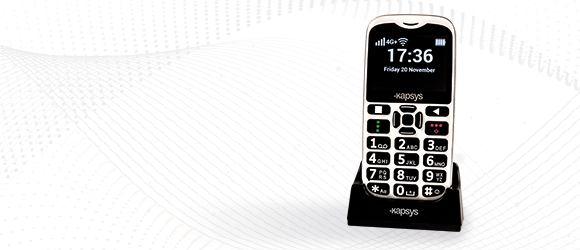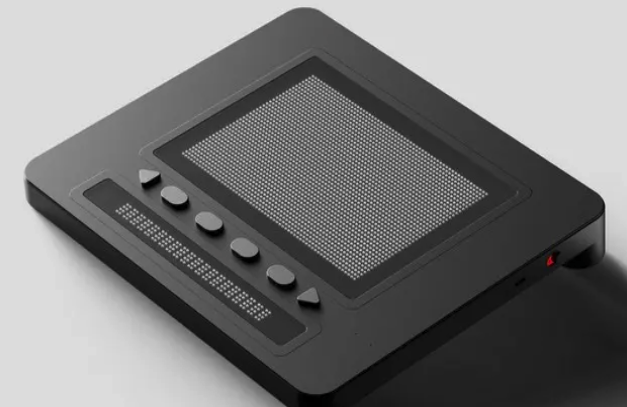Discover Cutting-edge Devices Developed for the Visually Damaged
The growth of ingenious devices for the aesthetically damaged stands for a significant innovation in ease of access and independence. Technologies such as smart glasses with AI capabilities and mobile applications made to give acoustic descriptions are reshaping day-to-day experiences for users.
Smart Glasses for Navigating

Smart glasses designed for navigation are changing the means visually impaired people engage with their atmosphere. These sophisticated devices utilize a mix of camera technology, man-made knowledge, and auditory responses to offer real-time information about surroundings. By employing barrier discovery systems, clever glasses can alert individuals to prospective dangers, enabling more secure movement in both familiar and strange settings.
The combination of GPS modern technology even more boosts navigation abilities, allowing users to receive acoustic instructions as they relocate. This hands-free strategy not just cultivates freedom however additionally equips aesthetically damaged individuals to navigate metropolitan landscapes with raised confidence. Furthermore, many smart glasses are equipped with functions that recognize sites and street signs, offering contextual information that enhances the individual experience.
In addition, the growth of these tools is continually progressing, with companies working to enhance the precision of object acknowledgment and increase the variety of navigational attributes. As clever glasses become more accessible and affordable, they hold the potential to considerably transform everyday life for visually impaired individuals. Eventually, these ingenious tools stand for a critical step towards inclusivity, offering enhanced flexibility and a better feeling of autonomy for people navigating the world around them.

Mobile Apps for Daily Living
How can mobile applications improve the day-to-day lives of visually impaired individuals? Mobile apps are revolutionizing the method visually impaired individuals browse their settings, handle everyday jobs, and accessibility details. These applications provide vital support through various performances, promoting self-reliance and enhancing lifestyle.
A number of cutting-edge mobile applications are designed especially for day-to-day living. Applications like Be My Eyes attach visually impaired customers with sighted volunteers by means of video telephone calls, allowing them to obtain real-time assistance with jobs such as reading tags or navigating strange areas. In A Similar Way, Seeing AI, established by Microsoft, makes use of expert system to define environments, read text, and recognize objects, properly changing a smartphone into a powerful device for daily assistance.
Furthermore, navigation apps customized for the aesthetically damaged, such as Aira and BlindSquare, provide audio-based instructions and environmental information, allowing users to traverse their environments securely and confidently. Beyond navigating and immediate assistance, mobile apps likewise sustain company and task administration, with attributes that aid users establish suggestions, develop order of business, and track appointments. In summary, mobile applications function as important sources, encouraging visually impaired individuals to lead even more independent and fulfilling lives.
Wearable Technologies for Aid
Empowerment through technology is progressively noticeable in the world of wearable gadgets created to assist visually impaired individuals. These innovative tools incorporate seamlessly into everyday life, enhancing navigation and providing important feedback to users. As an example, smart glasses outfitted with electronic cameras can identify faces and review text out loud, permitting individuals to communicate more confidently in social and expert setups.
One more remarkable improvement is making use of haptic feedback systems in wearable devices. These systems utilize resonances or various other tactile signals to convey information concerning the individual's atmosphere, such as challenges or modifications in surface, enhancing wheelchair and safety and security. Wearable modern technologies additionally include wristbands that attach to mobile phones, informing customers to notices via subtle vibrations, hence boosting connection without reliance on visual cues.
As these innovations proceed eyecare center near me to develop, they are not just enhancing independence for aesthetically impaired individuals but likewise fostering a better sense of incorporation in society. By connecting the void in between challenges faced in everyday living and the potential for autonomy, wearable modern technologies act as crucial devices in the mission for equal rights and empowerment for those with visual disabilities.
Audio Description Tools
Sound summary tools play a critical function in improving ease of access for aesthetically impaired individuals, supplying them with the capacity to engage with aesthetic media. Braille displays and notetakers. These devices use narrated descriptions of crucial visual components in films, television programs, and live performances, making certain that individuals can totally comprehend the context and feelings shared through visuals
Sound description can be integrated right into numerous platforms, including streaming services, movie theater testings, and live theater. Many prominent streaming solutions currently include audio summary as an ease of access attribute, permitting viewers to select it quickly. Along with mainstream media, specialized applications also exist, offering audio descriptions for art exhibits, museums, and other cultural events.
The performance of audio description hinges on the ability of the storytellers, that must convey visual details succinctly without interfering with the original sound. Technologies in this field are also leading the way for more personalized experiences, where customers can readjust the level of detail and pacing according to their preferences.
Braille Innovations and Instruments
Braille technologies and tools have actually considerably transformed the method visually impaired individuals communicate with text and information. Modern developments have led to the development of versatile devices that boost proficiency and self-reliance among users.
In addition, mobile Braille notetakers incorporate typical Braille input with modern-day performances, assisting in note-taking, scheduling, and document editing on the move. Smart glasses for the visually impaired. These compact gadgets typically feature text-to-speech capabilities, bridging the void in between Braille and acoustic info
Additionally, ingenious Braille printers have arised, allowing individuals to produce Braille labels, papers, and academic products efficiently. This accessibility promotes higher participation in specialist and academic settings, eventually advertising inclusivity.
Furthermore, study into clever Braille technologies remains to increase. Gadgets that include fabricated intelligence are being explored to supply real-time navigating support and contextual details, enhancing the individual experience in varied settings. Generally, these innovations mirror a commitment to equipping aesthetically impaired individuals via innovation, guaranteeing they can conveniently access and engage with the globe around them.

Verdict
The improvement of innovative devices for the visually damaged considerably boosts self-reliance and quality of life. These innovations not only foster higher inclusion however also promote freedom in everyday tasks, ultimately adding to a more easily accessible and equitable society for visually damaged people.
As smart glasses come to be more easily recommended you read accessible and economical, they hold the possible to considerably change day-to-day life for visually impaired individuals. Mobile applications are transforming the method aesthetically damaged users browse their environments, manage daily tasks, and gain access to details. Apps like Be My Eyes link aesthetically impaired users with sighted volunteers through video clip telephone calls, enabling them to obtain real-time assistance with jobs such as reviewing labels or navigating unknown areas.Furthermore, navigation apps customized for the aesthetically damaged, such as Aira and BlindSquare, supply audio-based directions and environmental information, allowing individuals to traverse their surroundings securely and with confidence.The improvement of cutting-edge devices for see this website the aesthetically damaged dramatically improves self-reliance and quality of life.
Comments on “Discover the Newest in Assistive Technology for the Blind”